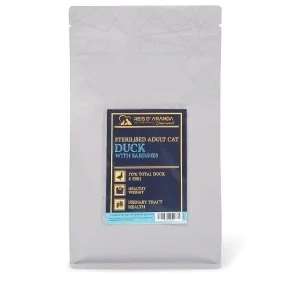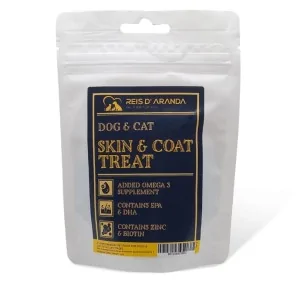The Tornjak originated from genetically homogeneous, almost extinct, indigenous shepherd dogs. These dogs have...
THE SIBERIAN CAT
INTRODUCTION
Siberian cats are true nature lovers. What most impresses admirers of this breed, known as Sibirskaja koschka in Russia, its country of origin, is its appearance and unassuming character. Their rich coat is adapted to the cold winters and hot summers of Siberia. It keeps them warm during the cold seasons of the year and is light enough for the summer months.
THE ORIGIN OF THE SIBERIAN CAT
The Siberian cat only began to be bred systematically from the 1980s onwards. Since 1990, it has also become very popular with cat lovers in the United States.
In Russia, its country of origin, the name Sibirskaja koschka (Siberian cat) was mainly used as a collective term to describe muscular domestic cats with a dense, soft coat. Long-haired cats can be found in all regions of Russia and Siberia, although in smaller proportion than short-haired cats.
It is not clear since when the long-haired gene has become so widespread in the Russian cat population. While some scientists assume an independent mutation, others assume a crossbreeding with long-haired cats from the East. Even the exact origin of the Siberian cat in its native country is a controversial issue. For a long time it was assumed that wild Caucasian cats were close relatives of Siberian cats. They differ in physique and coat texture from African wild cats, which were considered the ancestors of all domestic cats. However, recent studies contradict this theory. Researchers at Oxford University have found that domestic cats on all continents are descended from the wild cat.
Long-haired cats were a rarity in Europe until the 19th century, so the Russian variety attracted the attention of traders and travellers from the beginning. Siberian cats were described as early as 1864 in an edition of the Brems Tierleben and thereafter appeared sporadically in European publications.
These Russian longhair cats were also part of the first cat show at the Crystal Palace in London in 1871. Through the recessively inherited long-haired gene, long-haired kittens can also suddenly appear in a litter of short-haired cats. It is these specimens that later formed the basis of Siberian cat breeding.
However, the breed initially fell into oblivion after the first show at the Crystal Palace. At that time, Siberian cat breeding was just beginning. Long-haired cats were a rarity and were crossed with each other to produce long-haired offspring. As a result, the Siberian disappeared in the gene pool of Persians and similar cats, giving way to other more popular and sought after cat breeds. The political situation in Soviet Russia also contributed to the disappearance of Soviet Russia from the history of cat breeding at that time.
The 1980s marked a new beginning. These Russian domestic longhair cats appeared in Germany, where an experimental breed was established in 1985. The resulting cats were exhibited from 1986 onwards. After that, everything went on and on. Since 1987 the Siberian, then called ‘Siberian Forest Cat’, was officially recognised as an independent breed. The first litter of the new breed was born on 12th May 1988 in East Germany. The first pair of Siberian Forest Cats came into the hands of a West German emigrant family in 1987, resulting in the first registered litter in 1989. From that time on, the breed, still known as the ‘Siberian Forest Cat’, began to gain more admirers.
Around the same time, systematic breeding of the Siberian cat started in Russia. But each breeders' association supported different breeding standards, so that the appearance of the cat was not yet homogeneous. The first specimens were exported from Russia to the USA by the first Siberian cat that went to live in an American home in 1990. However, the high costs of importing from Russia relatively restricted the population of Russian longhair cats in the USA.
Today, Siberian cats are bred all over the world. The name was changed from ‘Siberian forest cat’ to ‘Siberian cat’ in 1991, mainly to better differentiate it from the Norwegian forest cat. The breed was officially recognised by the World Cat Federation in 1992 and in 1998 by the FIFe. In English, the breed is known as ‘Siberian forest cat’, ‘Siberian’ or ‘Siberian cat’.
WHAT IS THE SIBERIAN CAT LIKE?
The Siberian cat exudes the charm of a miniature wild cat. Its medium-length coat, with a tough, waterproof top coat and a dense undercoat, gives it a similar appearance to the maine coon and the Norwegian forest cat. However, it is noticeably smaller than a maine coon and has longer legs than the Norwegian Forest. Siberians are muscular and relatively heavy, reaching up to 9 kg. This is why they reach adulthood at the early age of 3 years.
Siberian cats cannot deny their country of origin. In winter their coat has a double layer which is waterproof and keeps them warm thanks to the dense and fine undercoat. Also exceptional is the ruff that forms the long hair on the neck and chest. In contrast, during the summer season these cats lose their undercoat, so that their coat becomes rather shorter and lighter, ideal for the hot summer months of northern Siberia. However, the tail retains its dense coat even during this hot period. The tufts of hair between the toes and ears also remain intact during the moult.
Siberian cats have a round head, with a curved forehead, large eyes and medium-sized, broad ears. Eye colour should be uniform and match the coat colour. All shades from yellow/gold to green, even blue or non-matching colours are acceptable in the case of white or two-coloured dogs.
As is the case with many breeds of cats, the various breeding organisations have their own requirements for the appearance of the Siberian cat. Depending on the membership of the organisation, the breeder applies the standard of the international breeders' association to which his organisation is affiliated. This is most obvious with regard to the desired coat colour. According to the umbrella organisation TICA (The International Cat Association), the Siberian cat can have ‘all traditional colours’. However, this is the only one that takes this view, as most breeder organisations exclude the colours cinnamon, chocolate, lilac and fawn. Breeders' specific English terminology describes reddish and brownish coat colours and their dilutions, which are slight variations of the colour.
The red variant of the Siberian cat is called cinnamon. The term fawn refers to the dilution of the red colour. Siberian fawn cats are reddish-beige. The English word chocolate refers to the base colour brown, while lilac corresponds to its dilution.
With the exception of these, all colours, patterns and white parts are admitted. The Siberian is the only breed of forest cats for which the colour point designation is also accepted. In fact, Siberian cats with point markings have been given their own breed name: neva masquerade. The FIFe (Fédération Internationale Féline) considers the neva masquerade as a separate breed. According to the Siberian cat standard, blue eyes, the darker the better, are also permitted in point-marked specimens.
THE HEALTH OF THE SIBERIAN CAT
Siberian cats are generally in good health, but like most cats, they are carriers of hereditary diseases. A typical hereditary disease seen in this breed is hypertrophic cardiomyopathy (HCM). This is the most common heart disease in cats. It causes an expansion of the heart muscle and can be detected with an echocardiogram.
The coat is dense, semi-long and consists of three layers, with a water-repellent top coat. The coat should be brushed twice a week to avoid knots and tangles. Use a metal comb or brush to keep the coat soft. You may need to brush more frequently during the spring, when Siberians tend to shed a lot.
The water-repellent coat can make bathing your Siberian a challenge. However, baths are rarely necessary if you care for his coat regularly.
THE SIBERIAN CAT'S PERSONALITY
This breed is perfect for a family as it is active, sweet and social, with a charming character. It enjoys the company of people, without being too demanding or requiring constant attention. He is usually content to be near you and watch what you are doing. The Siberian is talkative and will communicate with you using soft meows and chirps. He is great with children and adults and often gets along well with other cats and dogs. However, at first glance he can be a little reserved with strangers, although he will melt everyone's heart if he is comfortable with newcomers.
He is an intelligent and shrewd breed that will benefit from challenging tricks and interactive toys that activate his brain.
CONCLUSION
Its piercing gaze is one of the many characteristics that attract the attention of anyone who approaches the Siberian cat. For this reason, it has also become one of the most popular and appreciated cat breeds in the world.
Leave a comment
Log in to post comments
















